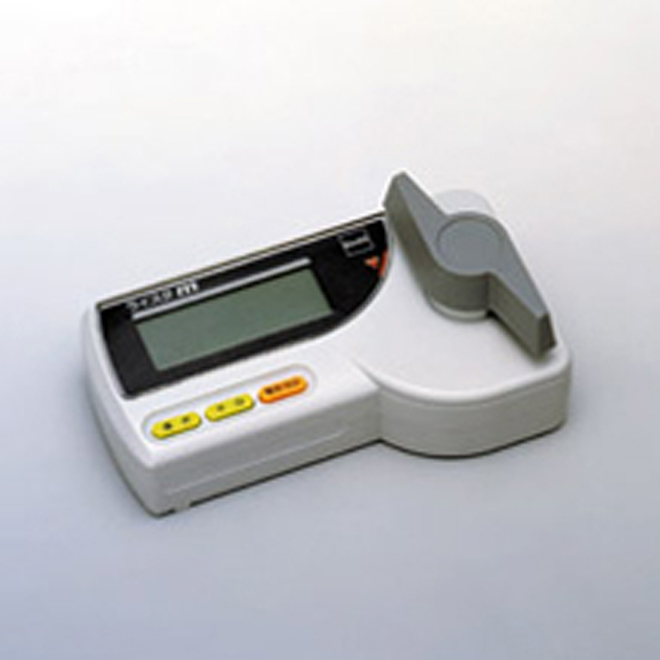Understanding the Relevance of a Moisture Meter in Preventing Mold And Mildew and Water Damage in your house
In the realm of home upkeep, the presence of wetness can often be a quiet yet formidable foe, with the ability of causing prevalent mold development and insidious water damages if left unchecked. Amidst the peaceful atmosphere of a house, hidden wetness concerns can brew underneath the surface, presenting a threat to both residential or commercial property and wellness. Furnished with the right devices and expertise, homeowners can proactively fight these possible threats. Understanding the importance of a dampness meter in this fight is not merely a choice however a strategic necessity.

Significance of Dampness Discovery
Efficient wetness discovery approaches are vital for safeguarding properties and preventing potential mold growth and water damages. Moisture can seep into various building products, leading to structural issues and health risks - Moisture Meter. By using a wetness meter, homeowner can proactively recognize locations prone to excess moisture, allowing for timely intervention and mitigation techniques
Wetness meters give exact analyses of moisture levels in different materials such as wood, drywall, and concrete. This data helps in identifying areas of issue, also in concealed or hard-to-reach areas. Early discovery of wetness build-up enables punctual repair services or modifications to stop further damages.

Just How Dampness Meters Work
Dampness meters play a critical duty in the positive recognition of excess wetness, assisting in the prevention of prospective mold development and water damages by giving accurate readings of moisture levels in numerous structure products. Some progressed moisture meters pin both incorporate and pinless technologies for detailed dampness detection. Comprehending just how moisture meters feature is vital for timely and exact wetness level analyses, enabling efficient precautionary procedures against mold and water damages.
Finding Early Caution Indications
Upon first inspection of a residential property, recognizing subtle signs of excess dampness comes to be essential in the early discovery of possible mold and mildew growth and water damages. Water discolorations can signal leaks or seepage, while peeling off paint or wallpaper may be a result of wetness jeopardizing the attachment of these products to the surface. Furthermore, a rise in allergic reaction signs or respiratory system issues among passengers might recommend the existence Get the facts of mold and mildew due to excess wetness.


Protecting Against Mold And Mildew Development
Recognizing early indication of excess moisture within a home not just allows prompt discovery of possible mold growth and water damages yet also functions as a proactive measure in preventing the proliferation of mold and mildew. To effectively protect against mold and mildew growth, it is important to deal with any sources of dampness immediately. This can include repairing leaks in roofings, windows, or pipelines, making sure proper air flow in moist areas like washrooms and kitchen areas, and utilizing dehumidifiers in high-humidity rooms. Routinely preserving the property and checking's plumbing, roofing, and gutters can likewise help in stopping water intrusion that might lead to mold and mildew development.
Keeping track of moisture levels in locations prone to dampness, such as basements and crawl spaces, using why not try this out a moisture meter can also aid in early detection of elevated dampness degrees and prospective mold development. By taking aggressive procedures to avoid excess moisture and mold and mildew development, house owners can protect their residential or commercial property and interior air top quality.
Advantages of Regular Monitoring
Routine tracking of dampness levels in a building can play an essential function in keeping a healthy and balanced interior environment and avoiding prospective mold and mildew and water damages. By routinely inspecting dampness degrees, homeowners can spot any type of problems immediately and take necessary actions to stop mold growth and water damage.
Additionally, normal surveillance allows property owners to track patterns and patterns in wetness degrees over time. By developing a baseline and monitoring changes, individuals can identify any type of locations of problem or potential vulnerabilities in the property's framework. This data-driven strategy makes it possible for targeted treatments and maintenance efforts to address underlying issues before they escalate right into even more substantial troubles. Eventually, the consistent tracking of dampness degrees encourages homeowners to secure their residential or commercial property, protect their health, and maintain the integrity of their indoor environment.
Verdict
In conclusion, the use of a dampness meter is important in stopping mold and mildew and water damage in homes. By detecting early caution signs of wetness, house owners can take positive procedures to avoid mold development and costly repairs.
By utilizing a wetness meter, building owners can proactively identify areas susceptible to excess wetness, enabling for prompt treatment and reduction approaches.
Moisture meters supply accurate readings of wetness degrees in various materials such as drywall, wood, and concrete.Dampness meters play a pivotal duty in the proactive recognition of excess dampness, assisting in the avoidance of prospective mold growth and water damage by providing accurate analyses of moisture degrees in different building materials. Understanding how moisture meters function is vital for precise and timely dampness degree analyses, allowing efficient precautionary steps against mold and water damage.
Keeping track of wetness levels in locations vulnerable to wetness, such as cellars and crawl areas, making use of a dampness meter can view it now also aid in early detection of elevated moisture degrees and possible mold and mildew development.